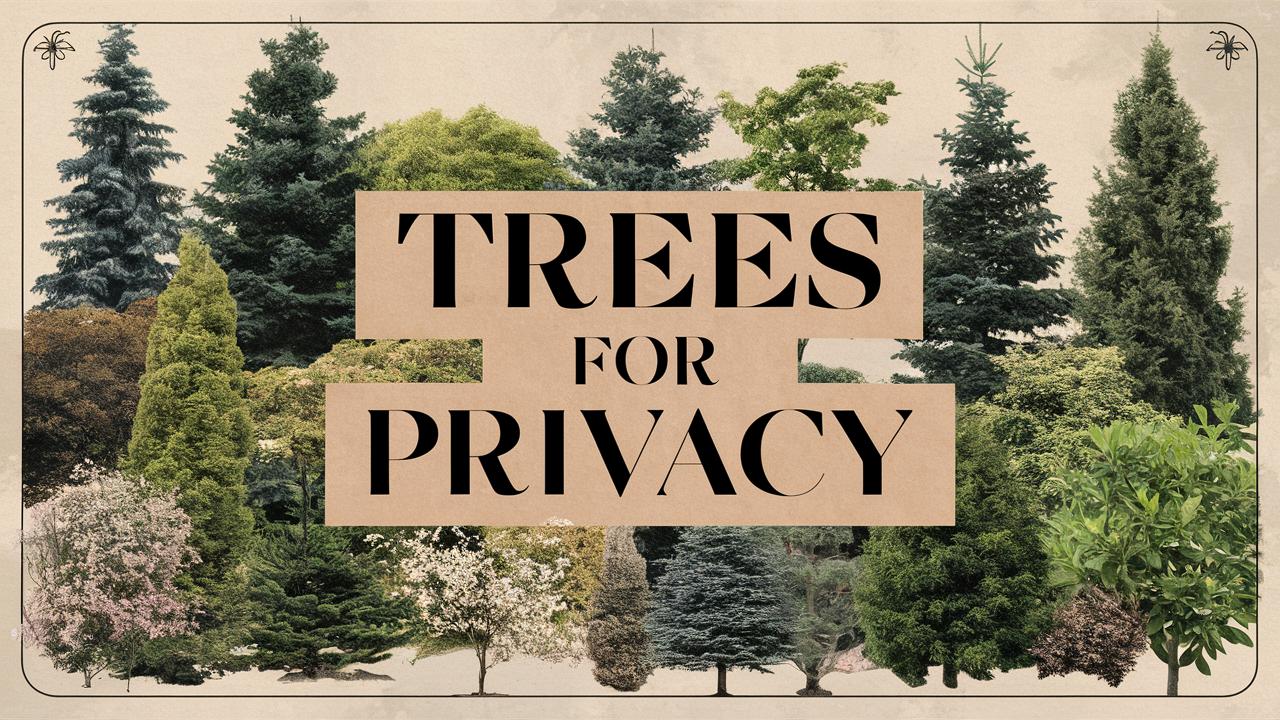In this guide, we’ll explore a selection of trees that are perfect for enhancing privacy in your outdoor spaces. From evergreens to deciduous varieties, we’ll delve into their characteristics, ideal growing conditions, and how they can best serve your privacy needs.
Green Giant Arborvitae
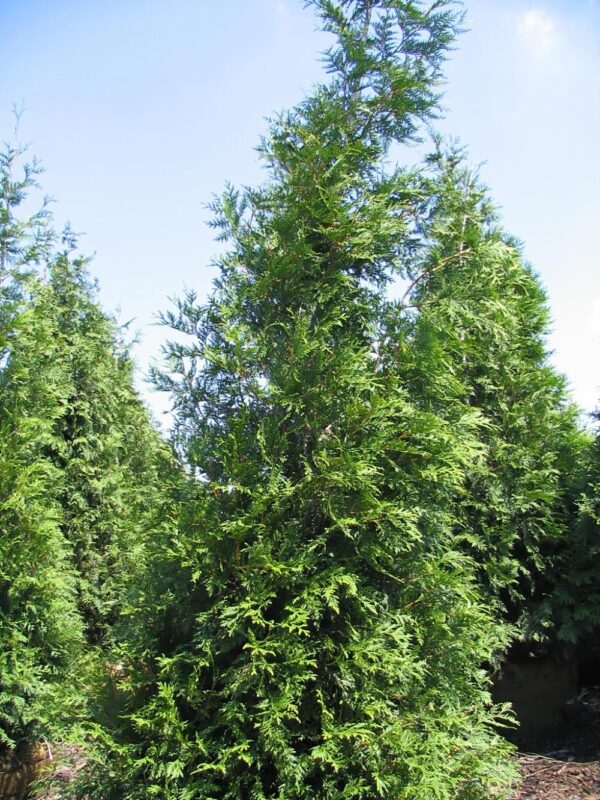
The Green Giant Arborvitae is an outstanding choice for those looking for a robust option to ensure year-round privacy. This evergreen tree is known for its impressive growth rate – often reaching up to 3 feet per year – and can achieve heights of 50 to 60 feet when left unchecked. With a lush, dense foliage that forms a perfect screen, the Green Giant is often sought after for planting hedges.
Green Giant Arborvitae is particularly resistant to pests and diseases, making it a low-maintenance alternative compared to other privacy trees. They thrive in a range of soil types and can tolerate both dry and wet conditions, although they prefer well-drained sites.
One downside to consider, however, is that they may need protection from extremely harsh winds, especially while they are young. Regular watering during the initial years can help establish a strong root system, ensuring that your privacy screen remains healthy and vibrant for years to come.
Eastern Red Cedar
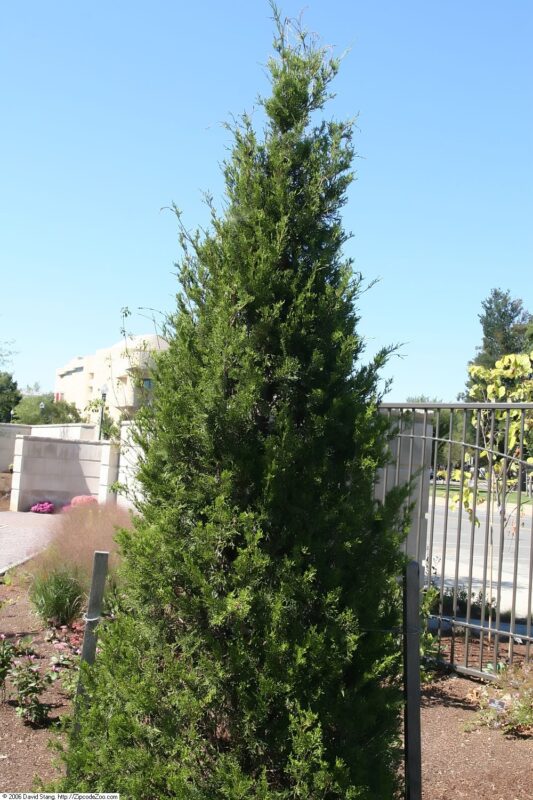
The Eastern Red Cedar is a native conifer that provides both beauty and privacy in various landscapes. This tree is not genuinely a cedar but rather a juniper, characterized by its attractive bluish-green foliage and delightful aromatic scent. Growing to heights of 40 to 50 feet, Eastern Red Cedars make excellent windbreaks and natural sound barriers.
Their durable wood is also resistant to decay, making them a sustainable choice for your yard. Additionally, they offer habitat for various wildlife species, including birds and small mammals, adding to the ecological benefits of your landscape.
One of the remarkable features of Eastern Red Cedars is their adaptability to different soil conditions; they can thrive in sandy, rocky, or clay soils. Moreover, they are drought-tolerant once established, requiring minimal maintenance. However, be mindful of potential deer browsing, as they might nibble on young trees.
Leyland Cypress
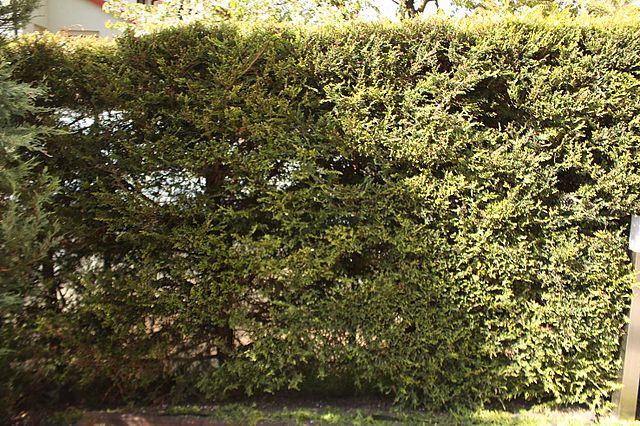
If you’re in search of a tree that boasts both width and height for privacy, the Leyland Cypress might be the answer. Known for its rapid growth, this evergreen can shoot up as much as 3 to 5 feet annually, eventually reaching heights of 60 to 70 feet. Its feathery, dense foliage forms an excellent wall, effectively blocking out views year-round.
Leyland Cypress thrives best in full sun and prefers well-drained soils. What’s appealing about this tree is its low maintenance requirements. Once established, it requires minimal care aside from occasional trimming to maintain a desired shape and size.
However, it is worth noting that Leyland Cypress trees can be susceptible to certain pests and diseases, particularly if the growing conditions are not optimal. For a robust and resilient option, plant them in a location where they can receive full sunlight, ensuring they thrive to create your desired privacy.
Emerald Green Arborvitae
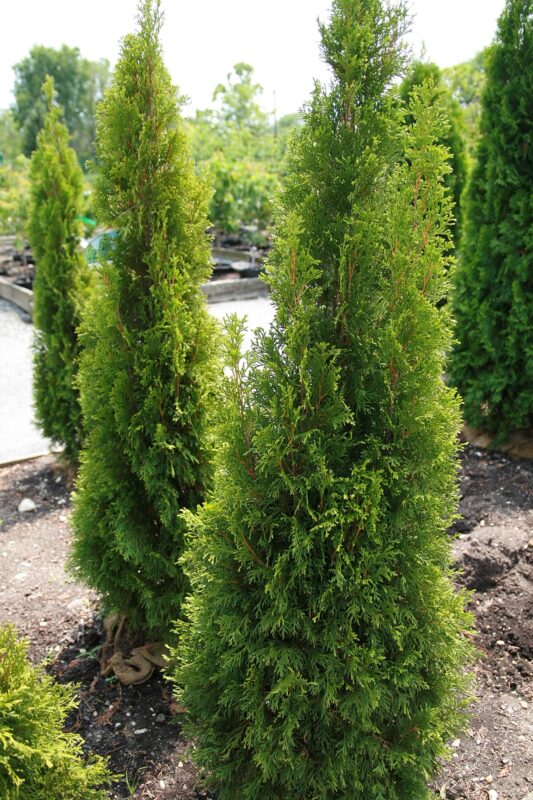
For those looking for a more compact privacy option, the Emerald Green Arborvitae is an excellent choice. Typically reaching heights of 10 to 15 feet, this evergreen has a graceful, upright growth habit that allows for a dense hedge-like structure when planted in groups.
Their particularly narrow form makes them a great option for smaller yards where space is limited. Despite being smaller than other trees, the dense, vibrant green foliage provides sufficient coverage and privacy, especially when planted side by side.
Emerald Green Arborvitae prefers full sun to partial shade and thrives in moist, well-drained soils. One of the key benefits of this variety is its resistance to winter burn, making it a dependable feature in any landscape. However, adequate watering during the establishment phase is crucial for optimal growth.
Wax Myrtle
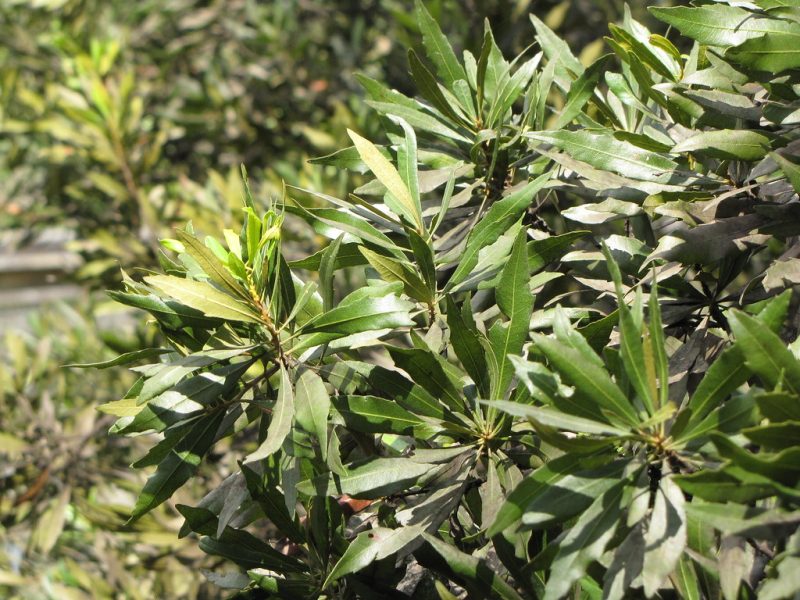
Wax Myrtles are versatile evergreen trees that work beautifully in privacy hedges while adding aromatic qualities to your garden. Growing between 10 to 30 feet tall, these trees have an attractive growth form, with glossy, aromatic leaves and small berries that attract various bird species.
One significant advantage of Wax Myrtle is its adaptability to different soil types, including sandy and wet soils. They are also salt-tolerant, making them suitable for coastal areas. These trees can be pruned to maintain their desired height and shape, allowing for some control over their growth.
In addition to privacy, Wax Myrtle trees can play a role in erosion control. They have a fibrous root system that helps stabilize soil, making them an eco-friendly choice for your landscape. Keep in mind that while they’re relatively low-maintenance, regular watering during dry periods will support their robust growth.
Areca Palm

For climates that support palm trees, the Areca Palm is an excellent option for a tropical privacy screen. This multi-trunked palm can reach heights of 20 to 30 feet and features feathery, arching fronds that can create a lush and inviting atmosphere in your garden.
One of the significant advantages of the Areca Palm is its dense growth habit, which provides excellent privacy while also softening hard landscape features. These palms thrive best in full sun to partial shade and prefer well-drained soil with consistent moisture.
Another perk of Areca Palms is their ability to filter and purify the air, contributing to a healthier environment. They are relatively low-maintenance, requiring only periodic watering during dry spells. Plant them in clusters for maximum effect and to create a vibrant privacy screen in your landscape.
Dawn Redwood

If you’re searching for a deciduous option that offers both beauty and an effective privacy solution, consider the Dawn Redwood. This unique tree can reach heights of up to 100 feet, with a feathery, lush crown that provides a stunning backdrop to any garden.
Dawn Redwoods have a distinctive changing foliage that turns vibrant shades of gold in autumn before falling off, adding seasonal interest to your landscape. They thrive in moist, rich soils and can tolerate moderate drought once established.
While they grow tall, the natural pyramidal shape of the Dawn Redwood can be pruned to create a more compact hedge effect. This versatile tree can provide excellent noise reduction and visual privacy while creating a breathtaking focal point in your yard.
Chinese Tallow Tree
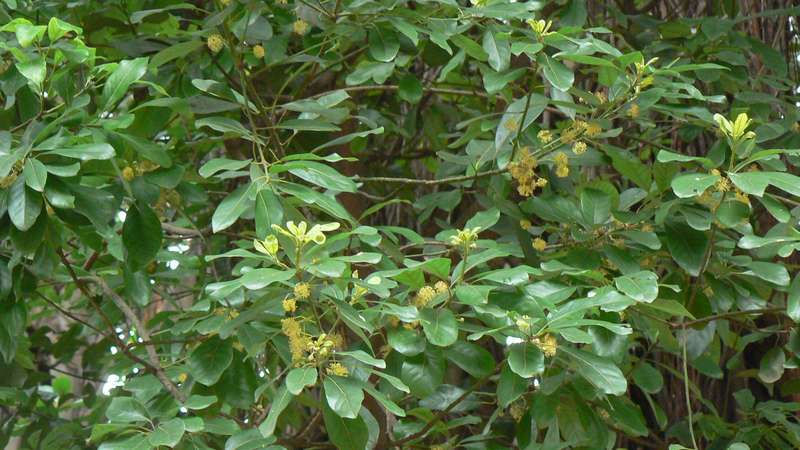
The Chinese Tallow Tree may be an unconventional choice for privacy, but it’s worth considering, especially in warmer climates. Known for its rapid growth and vibrant autumn colors, this tree can reach heights of 30 to 50 feet, offering a medium-sized privacy screen.
One of the environmental benefits of the Chinese Tallow Tree is its ability to thrive in various soil types, including wetter areas where many other trees might struggle. Its lush foliage helps create a dense barrier, providing a sense of seclusion in your yard.
However, it’s essential to be mindful of its invasive nature in some regions, as it can spread quickly and outcompete local flora. If you live in an area where the Chinese Tallow Tree is not invasive, consider planting it in a location where its growth can be controlled, while enjoying its unique aesthetic.
Yellow Oleander
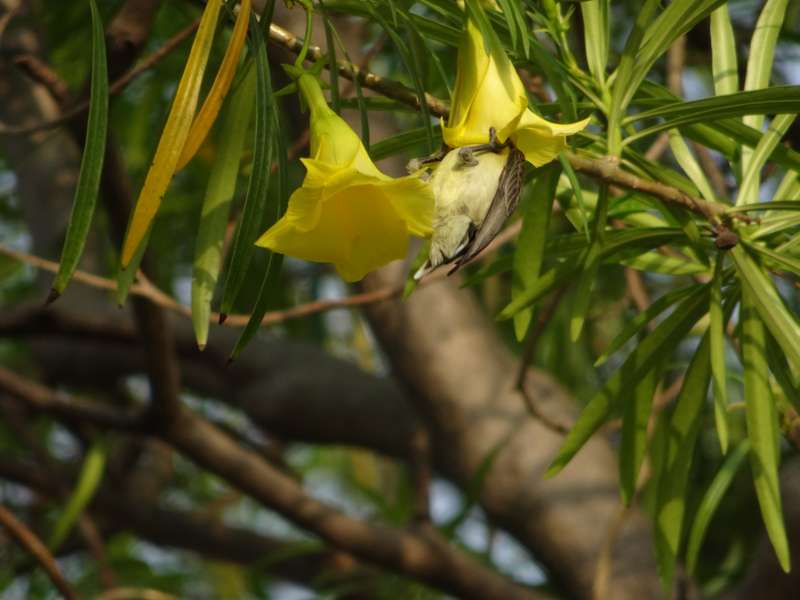
The Yellow Oleander is another fascinating option for privacy screening, especially in warmer climates. It typically grows between 10 to 25 feet tall, providing a dense and bushy form that effectively blocks views. Known for its fragrant, trumpet-shaped flowers, this tree adds beautiful color and a lovely scent to your outdoor space.
One significant advantage of the Yellow Oleander is its drought resistance once established, making it suitable for areas with less frequent rainfall. It thrives best in full sunlight and can tolerate a range of soil conditions.
Keep in mind that while the Yellow Oleander adds aesthetic value, it is toxic if ingested, so it’s essential to be cautious if you have pets or young children. Regular pruning helps maintain its shape and promotes denser foliage for optimal privacy.
Italian Cypress
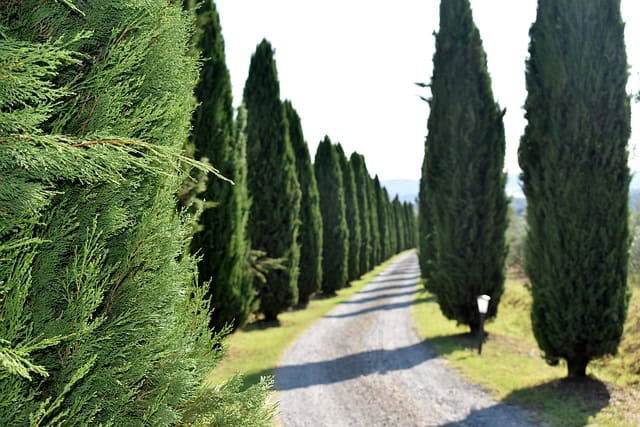
The Italian Cypress is a classic choice for creating dramatic vertical privacy screens in any landscape. Known for its tall and slender silhouette, this evergreen tree can reach heights of up to 60 feet while occupying a minimal footprint. Its elegant form makes it ideal for creating a formal hedge or lining driveways.
Italian Cypress thrives in well-drained soils and prefers full sunlight, making it a low-maintenance option in warmer climates. Given their drought resistance, these trees require minimal watering once established.
What sets Italian Cypress apart is its striking dark green foliage that remains vibrant year-round. Despite their beauty, they can be susceptible to pests and diseases, so choosing a planting site that provides good air circulation can help mitigate these risks.
Bald Cypress

The Bald Cypress is a unique option for privacy, especially in wetter areas or near water bodies. This deciduous conifer can grow to heights of 50 to 70 feet and is known for its impressive buttressed trunk, giving it an exceptional aesthetic in landscapes.
Bald Cypress trees display lovely foliage that changes colors with the seasons, turning golden-brown in the fall before shedding their leaves. They flourish in wet, swampy conditions, making them ideal for planting near ponds or streams while providing great privacy.
These trees offer added ecological benefits, including erosion control and wildlife habitat. Given their drought tolerance once established, they can also adapt to drier conditions, making them a versatile choice for various landscapes.
Lombardy Poplars
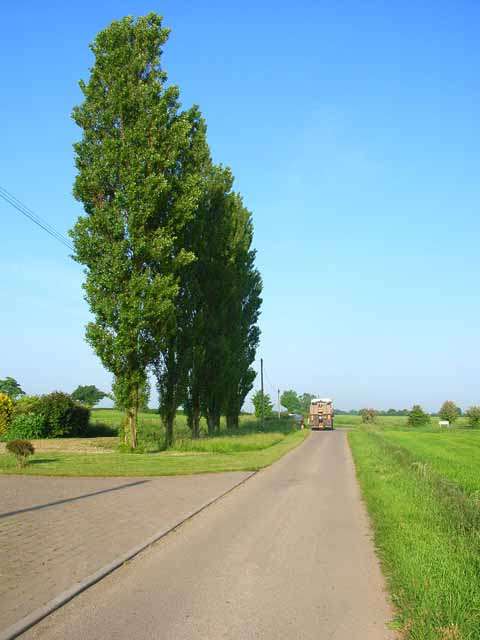
Lombardy Poplars are tall, slender trees known for their unique, columnar form, making them an excellent choice for quick privacy screens. They grow rapidly and can reach heights of up to 50 feet, providing a striking vertical barrier that blends well in contemporary and traditional landscapes.
These trees thrive in a range of soil conditions and prefer full sun exposure. However, they tend to have a relatively short lifespan (around 15-25 years) compared to other trees. As such, they make an ideal temporary privacy solution while waiting for more permanent trees to grow.
While Lombardy Poplars can thrive in various conditions, they require some maintenance, including regular pruning to prevent diseases and maintain structure. Regardless of their lifespan, their dramatic appearance and rapid growth can create a stunning effect in your yard.
Japanese Pagoda Tree
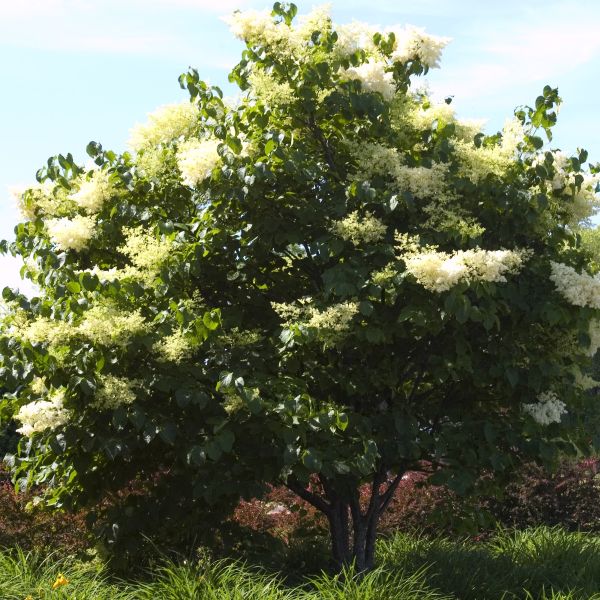
The Japanese Pagoda Tree, known for its striking appearance and unique leaf arrangement, can serve as another attractive option for privacy. Reaching heights of 40 to 60 feet, this deciduous tree provides a layering effect with its umbrella-like canopy, casting dappled shade beneath.
This tree is particularly loved for its fragrant flowers that bloom in late spring to early summer, attracting pollinators and adding vibrancy to your landscape. It thrives in well-drained soils and prefers full sun or partial shade, making it adaptable for varying conditions.
Japanese Pagodas can withstand drought conditions once established but may require moisture during periods of intense heat. They also have a fairly rapid growth rate, providing aesthetic interest alongside your privacy needs.
Tulip Tree
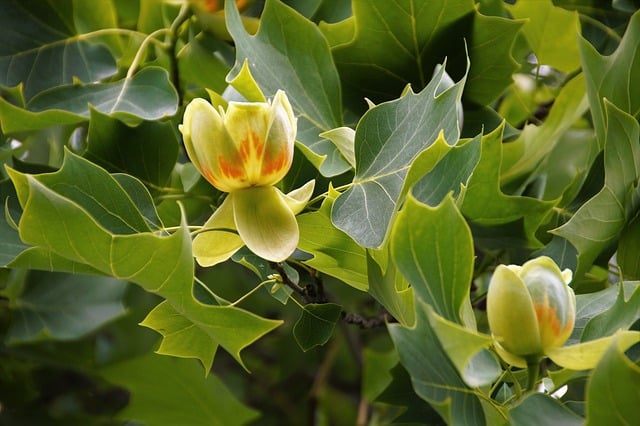
With its unique tulip-shaped flowers and majestic height, the Tulip Tree is an excellent choice for those seeking both privacy and beauty. Reaching up to 100 feet, the Tulip Tree quickly establishes a towering presence in your yard, providing a dense screen and offering vibrant spring blooms.
These trees thrive in rich, well-drained soils and prefer full sun. The imposing stature of the Tulip Tree means it requires ample space to grow, making it suitable for larger properties. Once established, they are relatively low-maintenance and drought-tolerant.
In addition to privacy, Tulip Trees support biodiversity by providing habitat for various bird species and other wildlife. Their extensive root systems can also assist with soil stabilization, making them a responsible choice for eco-conscious landscaping.
Lemon Bottlebrush
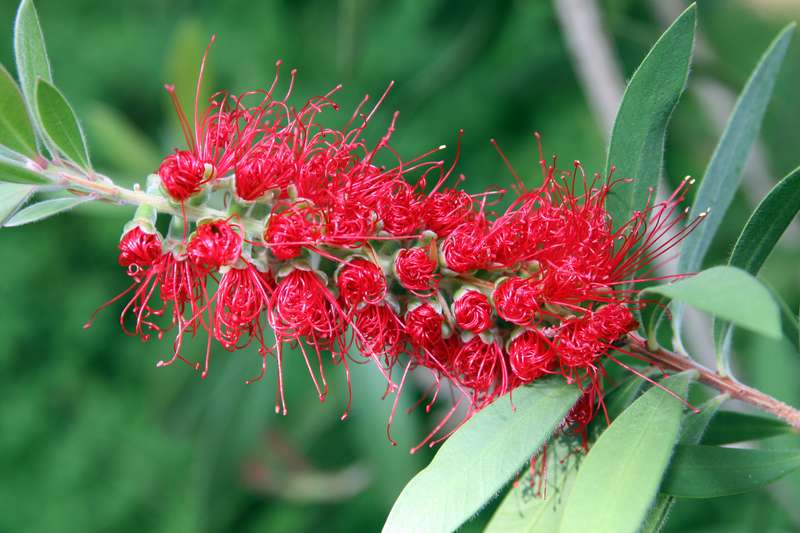
The Lemon Bottlebrush, an evergreen shrub or small tree, brings tropical flair while providing a beautiful privacy screen. Typically reaching heights of 10 to 20 feet, this tree displays stunning, bottlebrush-shaped flowers in brilliant red, drawing various pollinators, including bees and birds.
This resilient tree can tolerate a range of soil conditions and prefers full sun, making it a versatile landscaping option. Once established, Lemon Bottlebrush trees require little maintenance, as they are resistant to pests and diseases.
Their compact form makes them suitable for smaller yards while providing effective visual barriers. Regular pruning can encourage denser growth, ensuring that your privacy needs are met while enjoying their colorful blooms.
Southern Catalpa
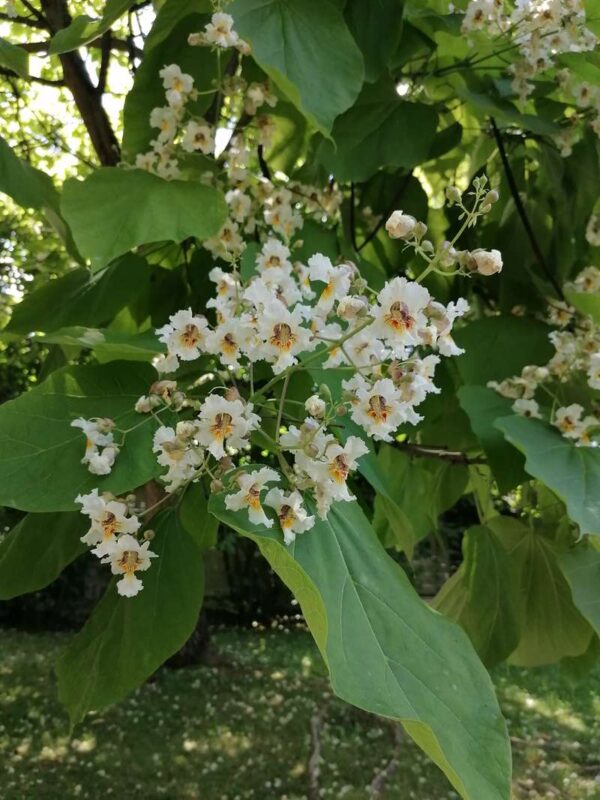
The Southern Catalpa is a unique addition to the list of trees perfect for privacy. Known for its large, heart-shaped leaves and striking white flowers, this tree can grow between 30 to 60 feet tall, providing a lush canopy that offers privacy during the warm months.
Southern Catalpas thrive best in well-drained soil and prefer full sun to partial shade. They can tolerate various soil conditions, making them adaptable to many landscapes. The trees are also relatively disease-resistant and low-maintenance once established.
The eye-catching flowers and broad leaves of the Southern Catalpa create an enchanting atmosphere in your outdoor space. Its unique form and substantial height make it an attractive option for those seeking a privacy tree that catches attention.


